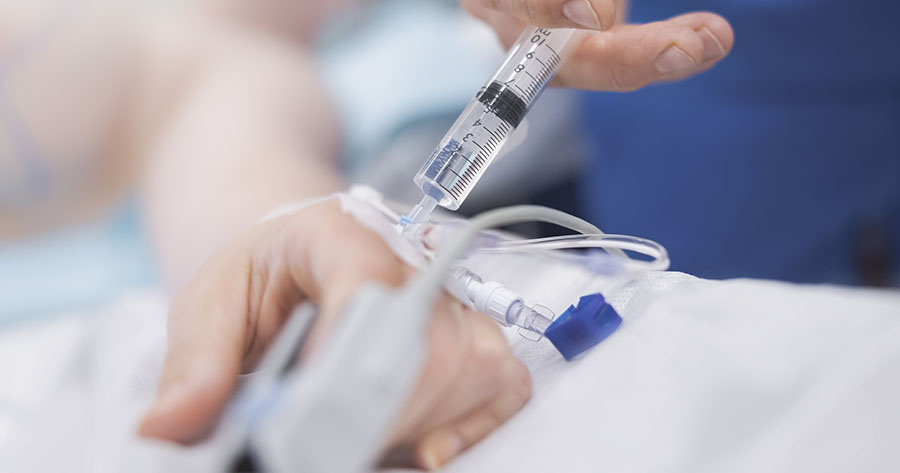Despite major advances in sleep medicine and greater awareness of the role of sleep in health and wellbeing, one of the most common sleep disorders, obstructive sleep apnoea (OSA), remains underdiagnosed. If left untreated, depending on severity, OSA can lead to a variety of cardiovascular (Mannarino et al, 2012), metabolic (Punjabi et al, 2004), neuroendocrine (Gianotti et al, 2002) and inflammatory (Selmi et al, 2007) consequences.
An increasing body of evidence suggests that OSA is independently associated with glucose intolerance (Punjabi et al, 2004; Punjabi and Polotsky, 2005; Punjabi and Beamer, 2009) and worsened glycaemic control (Papanas et al, 2009; Aronsohn et al, 2010; Pillai et al, 2011; Priou et al, 2012). Also, OSA is a common comorbidity in people with type 2 diabetes (T2D), with a higher prevalence (23–86%; Einhorn et al, 2007; Foster et al, 2009) than in the general population (2–7%; Lurie, 2011).
Since both OSA and T2D increase susceptibility to oxidative stress, the coexistence of OSA and T2D potentially places individuals with these conditions at an increased morbidity and mortality risk.
The number of people with T2D is rising rapidly worldwide, along with the prevalence of obesity, which is driven by unhealthy diets and reduced physical activity. Besides obesity, OSA is increasingly recognised as a potential independent risk factor for the development of T2D (Botros et al, 2009; Marshall et al, 2009; Muraki et al, 2010; Pallayova et al, 2011). The present article aims to increase clinical awareness of and draw therapeutic attention to OSA as a potential sign of developing T2D in high-risk individuals.
OSA as a breathing disorder
OSA is characterised by frequent intermittent complete cessation of breathing (apnoea) or reduced breathing (hypopnoea), which in turn results in hypoxaemia and intermittent arousal. The frequent interruptions in sleep, which are generally not noticed by the individual, result in daytime sleepiness.
The most commonly employed measure of OSA is the apnoea–hypopnoea index (AHI). This measures the number of apnoeas plus hypopnoeas per hour of sleep, or per hour of respiratory recording. OSA is diagnosed when the AHI is ≥5 events per hour, but becomes a significant health issue with AHIs ≥15 events per hour (Lurie, 2011). The severity of OSA in adults is defined as: mild for AHI ≥5 and <15 events per hour; moderate for AHI ≥15 and ≤30 events per hour, and severe for AHI >30 events per hour (Epstein et al, 2009). The clinical signs and symptoms of OSA are shown in Table 1.
Diagnosis of OSA (Table 2) is based on a comprehensive sleep evaluation and findings identified by objective sleep testing that includes either in-laboratory polysomnography or home testing with portable monitors (Epstein et al, 2009). Portable monitoring comes with different degrees of complexity, with the simplest being oximetry alone.
Several validated sleep questionnaires, such as the Epworth Sleepiness Scale (Johns, 1991) or the Berlin questionnaire (Netzer et al, 1999), which are freely available on the internet, can be administered to obtain a relevant sleep history and assess the degree of sleepiness. Neither is, however, diagnostic of OSA. The Berlin questionnaire identifies individuals as high or low risk for OSA, while the Epworth scale measures symptoms of sleepiness.
Generally, lifestyle change and weight loss is recommended for treatment of OSA but this may be insufficient to completely normalise breathing during sleep. The primary recommended therapy for moderate to severe OSA is positive airway pressure (PAP) delivered in continuous, bi-level or auto-titrating modes. This provides a pneumatic splint for the airway, preventing collapse during sleep. The alternative therapies for OSA include behavioural treatments, oral appliances, upper airway surgery and/or adjunctive therapies (bariatric surgery, pharmacologic agents and oxygen therapy). A regular sleep specialist follow-up to monitor tolerance and adherence to OSA treatments, side effects, development and progression of OSA complications, and symptom resolution is required.
OSA as a sign of developing diabetes
The two primary disturbances in OSA, acute periods of hypoxic stress and sleep fragmentation, have been shown to potentially impair glucose homeostasis (Oltmanns et al, 2004; Aronsohn et al, 2010; Stamatakis and Punjabi, 2010; Priou et al, 2012). Moreover, OSA, obesity and impaired glucose metabolism create a vicious triangle, leading to further weight gain, progression of OSA, deteriorating glucose homeostasis and, ultimately, to overt T2D in predisposed individuals (Pallayova and Taheri, 2013). While behavioural therapy alone might be satisfactory for mild OSA, the treatment with PAP is the current best treatment for moderate to severe OSA and, although still controversial, may also improve glycaemic control (Babu et al, 2005; Dawson et al, 2008; Pallayova et al, 2008).
The identification of the development T2D in people with OSA may be a difficult task for the clinician, especially since people usually present to a respiratory/sleep department. People may be asymptomatic or present with symptoms and signs that are common to both OSA and T2D (for example, nocturia, dry mouth, difficulty in concentration, sexual dysfunction). Therefore, the diagnosis of T2D needs to be considered in all people with OSA, even in those without the typical signs and symptoms of the diabetes. Ideally, screening for diabetes and metabolic syndrome should be included as part of the sleep assessment.
The role of nurses
Nurses play a critical role in delivering health promotion, advice and disease prevention. In collaboration with other healthcare professionals, nurses facilitate complex clinical care and undertake a variety of healthcare activities, including care coordination, supporting self-management of people with diabetes, and monitoring patient recall and reminder systems. Of importance, practice nurses can undertake health assessments and administration of sleep questionnaires and thus facilitate the screening for metabolic syndrome, diabetes and OSA within the primary care setting.
Clinical aspects and future perspectives
Current clinical practice guidelines highlight the need for prevention, early diagnosis and treatment of diseases. Despite increasing evidence that OSA is potentially an independent risk factor for the development of T2D, none of the currently available diabetes risk calculators considers the presence of OSA as a risk factor for T2D. Therefore, the risk of T2D developing within 10 years can be determined with the use of a modified risk calculator. Factors considered in this calculator could include: age; sex; race/ethnicity; waist circumference; obesity; history of elevated glucose levels; history of gestational diabetes; history of hypertension; history and severity of sleep apnoea; family history of diabetes; limited activity levels and poor diet.
Given the high risk of impaired glucose metabolism in OSA, health professionals managing people with OSA should consider adopting their clinical practice to ensure that a person with OSA is considered for T2D. Fasting glucose measurement and glycated haemoglobin (HbA1c) testing can be used for screening of adults with OSA with moderate to high risk of diabetes, followed by the oral glucose tolerance test in those at very high risk. The process of diagnosing T2D in people with OSA should ideally be started as early as possible in the primary care setting and specialist services, and followed by annual routine diabetes screening with HbA1c in asymptomatic adults with moderate to very high risk of diabetes. People with moderate to severe OSA and pre-diabetes should be monitored closely because of the risk of progression to overt T2D. Successful implementation of these recommendations requires close liaison between primary care and specialist services, specifically, diabetes, endocrinology and sleep specialists.
Summary and key learning points
OSA is a chronic disease requiring ongoing, long-term management that should ideally be approached on a case management basis utilising a multidisciplinary care team, including primary and secondary care healthcare professionals. Given the complex bidirectional relationship between OSA and T2D, people with one condition should be considered for the other.
The multidisciplinary approach and timely specialist referral are essential for prevention, early diagnosis and treatment of the disorders of glucose metabolism that may present in people with OSA, or develop over time. The currently available T2D risk calculators need to be updated and validated to also include OSA as a risk factor for the development of T2D.
People with an inadequate T2D control should be evaluated for sleep apnoea that may contribute to worse glucose control and may also be associated with the presence of diabetes complications (Bottini et al, 2008).
Appropriate and comprehensive ongoing education, healthy diet and lifestyle, regular physical activity, as well as satisfactory treatment of OSA and other comorbidities are all needed for the successful management of people with concurrent prediabetes or overt T2D.





The risk factors and what might be done to address them.
24 Mar 2025